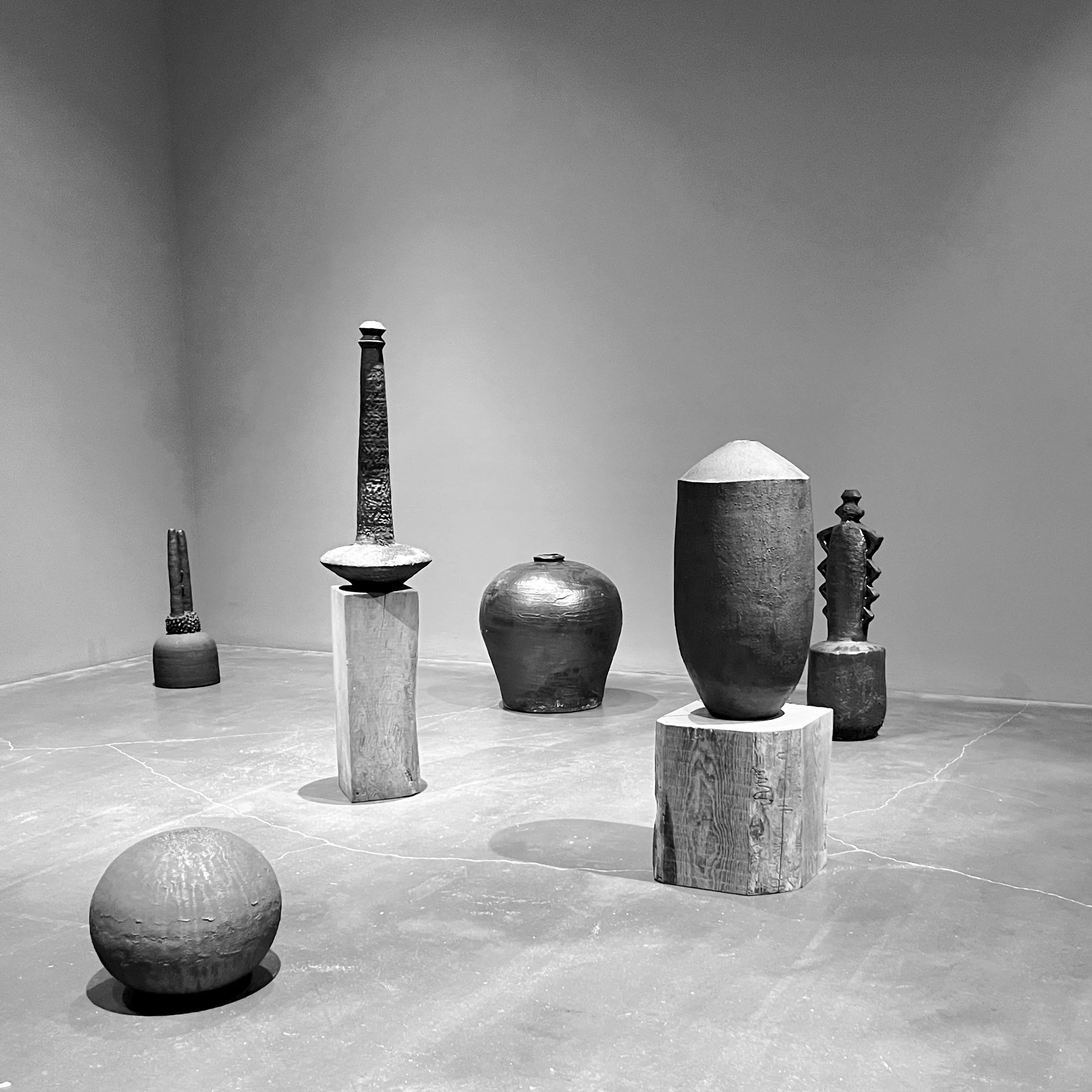On Recent Music Performances
Last week I had a chance to see two music performances. On Sunday 2/5 on the last day of artist Theaster Gates exhibit at the New Museum, Shedrick Mitchell performed on the organ, accompanied by Gates and his group The Black Monks. On the following day, Monday 2/6, Radio City Music Hall screened Lord of the Rings: The Fellowship of the Ring with live orchestra and choir. Here’s a quick recap of these very different, but equally powerful performances.
Upon entering multi-disciplinary artist Theaster Gates’s exhibit Young Lords and Their Traces, I walked into a large room which held dozens of Gates’s clay sculptures. Some looked like idols, human-like, while others were crosses and other shapes or symbols. The exhibit also included tar paintings, architectural installations, photos and video. Organ music could be hear throughout the room.
“Encompassing the full range of the artist's practice across objects, images, sounds, movements, archival collections, and site-specific environments, "Young Lords and Their Traces" highlights Gates's continually inventive forms of production. Taking its title from the radical activists and thinkers who transformed the social fabric of the artist's home city of Chicago and beyond, the exhibition reimagines the museum as a space to memorialize both heroic figures and everyday icons. It combines collective histories and the unique visions of individuals who have helped shape Gates's artistic world.”
- from Young Lords and Their Traces
At the rear of the exhibit, I ascended a long narrow staircase which led to the sunlit room on the top floor. To my suprise, a man was playing a B3 organ and an audience sat on the floor behind him. Suspended on the opposite wall above the man were not one but seven Leslie speakers. It occurred to me that the music I’d heard in the room below was not a recording.
The Hammond B3 organ was specifically designed for churches as an alternative to the large, immovable pipe organs found in larger churches and cathedrals. The B3’s Leslie speaker has a tweeter which rotates at a fast or slow speed, controlled by the organist, giving the organ a whirling sound. The B3’s sound became an integral part of the gospel tradition as well as jazz and blues music.
Organist Shedrick Mitchell performed several pop, soul, jazz and gospel tunes. The effect of not one but seven Lelie speakers was incredibly powerful and created the sensation of being in a larger space with a pipe organ. The sound eneveloped the entire space and resonated my body, the furniture, and the room itself. I had no idea I’d be stepping onto hallowed ground that afternoon, into Church. As Mitchell began another gospel tune, a vocalist appeared from behind the audience and accompanied the organ. I later found out that this was artist Theaster Gates.
Gates was joined by two other vocalists from his group The Black Monks and who performed several “gospel soul chants”, drawing on spiritual and gospel traditions. The vocalists improvised with one another while exploring their dynamic range. During one especially moving part of the set, a audience member stood and began to clap and sing and joined Gates and the other performers at the front of the room. Gates incorporated this unexpected addition to his group and continued improvising, clapping and singing with the audience member. The piece grew to a crescendo and then back down to a whisper before ending. The audience erupted in applause. As Gates embraced their new collaborator, I could see tears in his eyes. The person hugged each of the performers before returning to her seat and receiving a round of applause herself. This episode seemed to signal an awareness of pain and suffering demonstrated by the vocalists and offered recognition and comfort on behalf of all present. Art and music facilitated this healing.
On Monday 2/6 I joined fellow LOTR enthusiasts, some in costume, for a screening of The Fellowship of the Ring with live orchestra and choir at the grand Radio City Music Hall. The Lviv National Philharmonic Orchestra of Ukraine conducted by Ludwig Wicki brought Howard Shore’s beautiful, grand and haunting score to life with a variety of instruments including accordion, dulcimer, and harp as well as those typically found in an orchestra.
I was able to appreciate how the score served the film. At times, when the film displayed a montage of action but had no dialogue, the score moved the narrative along. The score also employed the use of motifs, which in the beginning might be weaker and played only by one instrument. As the movie progressed, a motif grew to a whole group of instruments, more powerful than when it began. Solo wooden flute carried the Hobbit/Shire theme. The angelic choir served the sounds of the Elf city of Rivendell. Sweeping grand French horns strengthened the Fellowship’s theme. No doubt the epic sound of a live orchestra and choir contributed to the audience’s excitement during the film.
Check out more from the Lord of the Rings symphony.
During both performances I am reminded of the power of music. When I hear certain pieces of music, I get ‘chills’ which seem to eminate from my spine and radiate outward through my body. I feel good. I’m happier and kinder as a result. Recently, I read that musicians in the ancient world served as the original shamans, propelling us on our journeys of transformation. I believe this still holds true today.
Until next time,
KW

